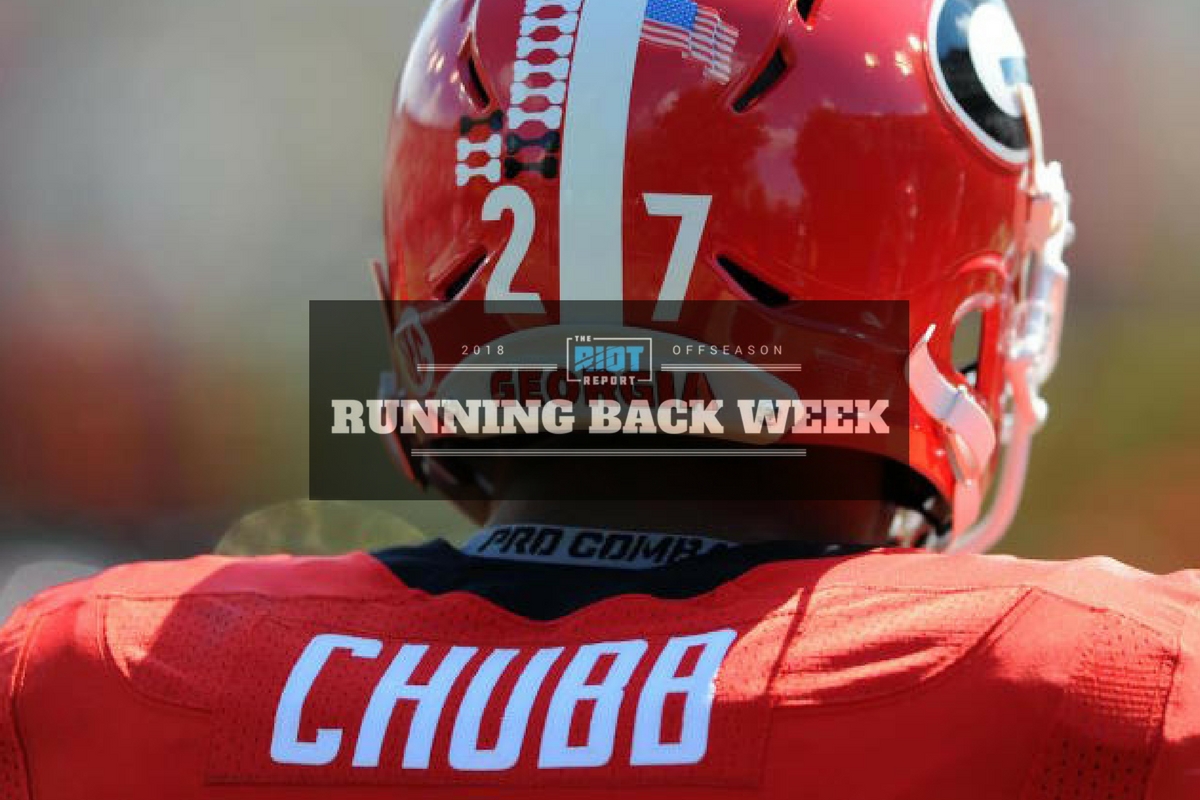Each week this offseason, we’ll be focusing on one position and how the Panthers may choose to address their needs; whether they’re in the market for an upgrade at starter or just a reliable backup, every player on the 53-man roster is going to be important in 2018.
This is Running Back Week.
In 2014, Georgia running back Todd Gurley struggled with injury and suspension, missing seven games and forcing the Bulldogs to turn to a relatively unknown true freshman to take over the lead-back role; that freshman went on to run for over 1,500 yards and 14 touchdowns while averaging over seven yards-per-carry in one of the premier collegiate seasons in recent memory as Nick Chubb moved from unknown true freshman to college football star in the matter of a single season. 2015 started the same way for Chubb, as the Cedartown, GA product averaged nearly 150 yards-per-game at over 8 yards-per-carry through the first five games, notching eight total touchdowns during that period before collapsing with a dislocated knee and three ligament tears on his first carry of Week 6 against rival Tennessee.
One of the best collegiate running backs of the past decade looked like he might be done for good. It was an injury that many players would never have come back from, and it is certainly fair to say that post-injury Chubb has never been able to return the peak he hit in his first season-and-a-half of college football, but despite all of this, Chubb has been able to perform at a level that has him in the conversation to be taken in the top fifty picks in the 2018 draft; add in the fact that his powerful running style would fit well with the Panthers’ existing running backs and the question becomes:
What could Nick Chubb bring to the Panthers?
The Power And The Glory
Measuring in at 5’11 and 228 pounds, it shouldn’t be much of a surprise that Chubb is something of a powerful running back. Much of this starts with his ability to get up to speed quickly, as this then gets him into the second level and running at second and third-tier defenders before the defensive linemen are able to become a factor:
This initial burst also gives him momentum to drive through tacklers and add extra yards after contact; Chubb further adds to this by continuing to keep his feet moving, which then allows him to keep churning out yards even when the defender is able to secure the tackle. This allows him to turn three-yard runs into nine-yard runs:
And potential safeties into two-yard gains:
This also allows him to break through tackles, leading to a wrecking-ball running style with him bouncing off or driving through tackles:
This ability to break through tackles and add yards after contact is very valuable, especially on short yardage and red zone carries where every last inch can be valuable. What’s more, that ability to turn a three-yard carry into a five-yard carry is the difference between being behind or ahead of the chains; most running backs in the NFL average somewhere between 3.5 and 4.5 yards-per-carry, it is the shades in between that are so valuable. However, in order to be effective at the NFL level, players need to be able to do more than simply thunder downhill, even if that can be effective at times. What they need to demonstrate is the ability to pick up yards before contact by navigating blocks and reading defenders.



